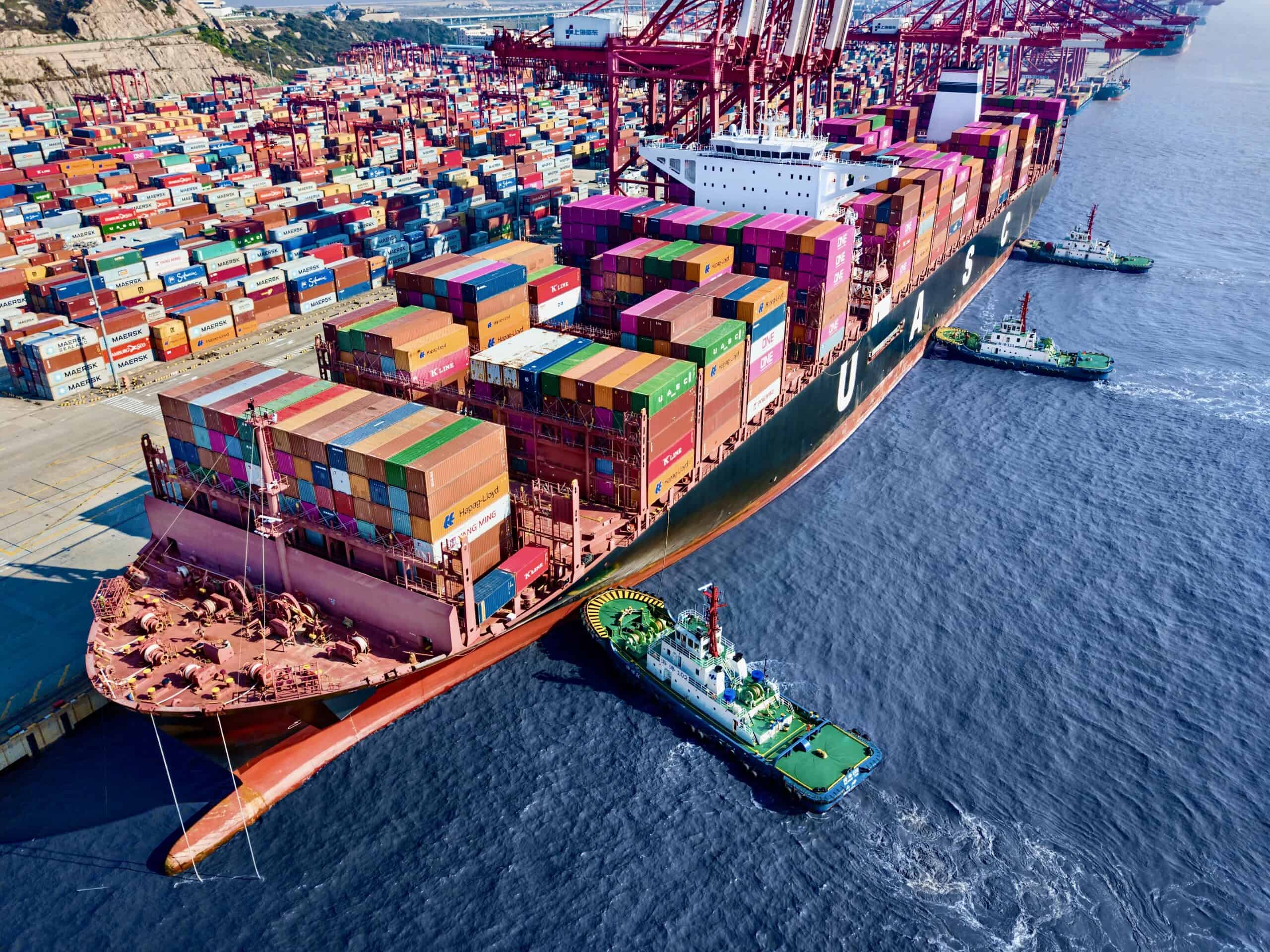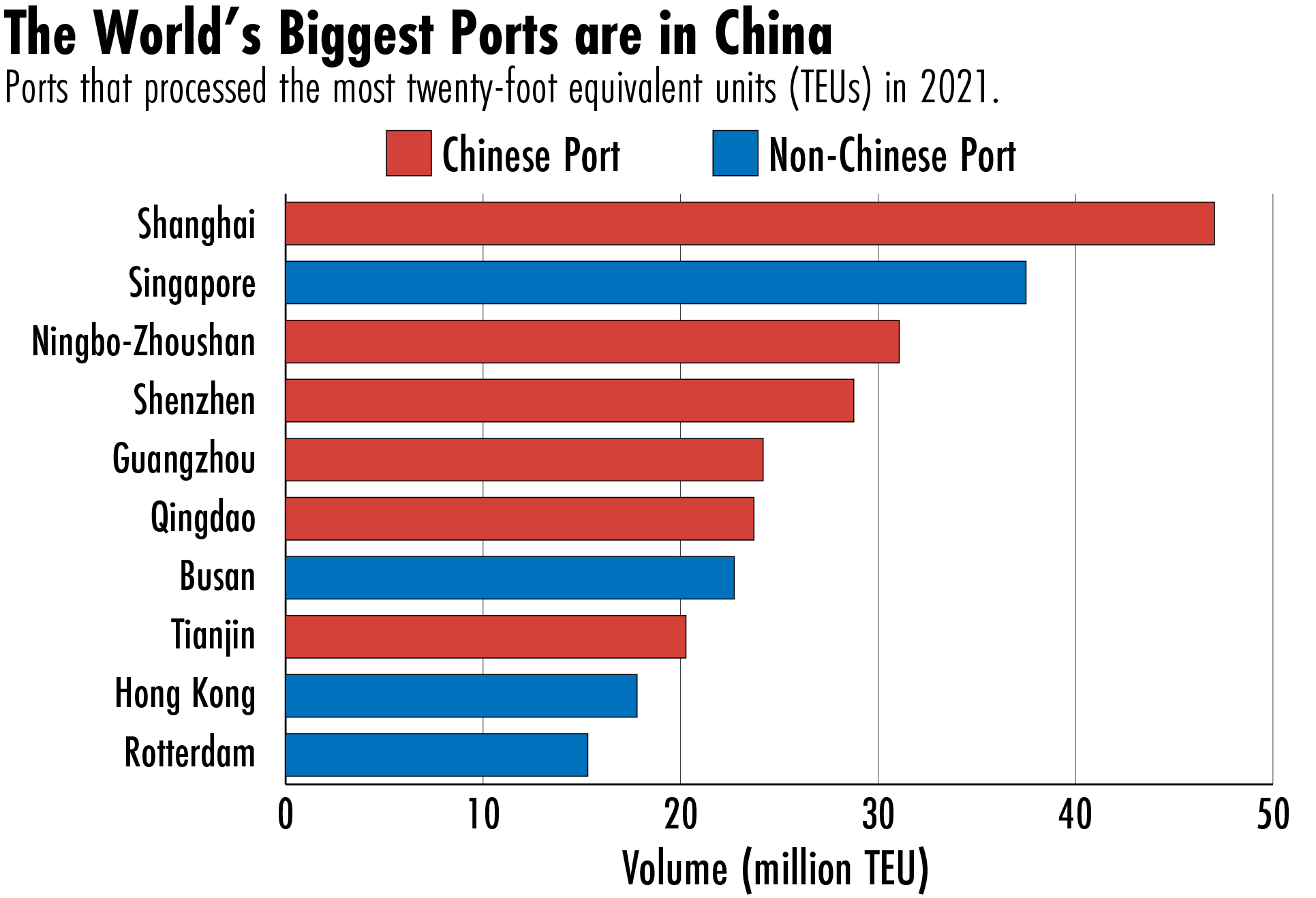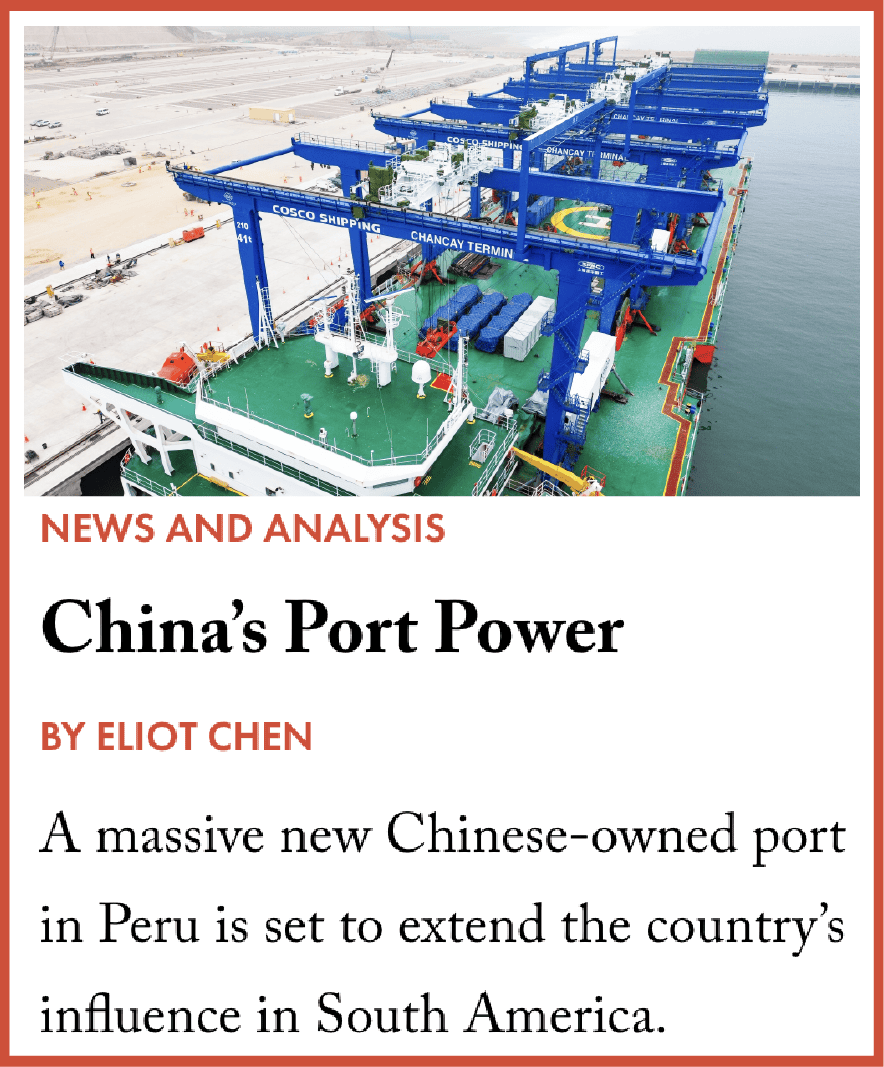
For three days last week, dockworkers no longer dotted the terminals at ports across the U.S.’s eastern and Gulf Coasts. The short-lived strike ended after the U.S. Maritime Alliance, which represents the port operators, agreed to raise salaries, allaying fears that the walkout could inflict a multi-billion dollar hit on the American economy.
But the episode has both highlighted the central role of maritime trade in the U.S. economy, and cast a light on long-standing inefficiencies at U.S. ports, which lag their peers abroad — especially in China — across several measures.

A raft of statistics show how China has pulled ahead. On average, container vessels spent half as much time at ports in China as they did at ports in the United States in 2022, according to the United Nations Conference on Trade and Development. Chinese ports also rank highly on the World Bank’s Global Container Port Performance Index, which rates the Yangshan Port, on Hangzhou Bay south of Shanghai, as the world’s most efficient.
Indeed, China has ten ports in the top 25 in the World Bank index: No other country has more than one. The highest-ranking U.S. port, Charleston, is meanwhile ranked 53rd, while Los Angeles, the largest U.S. port by annual number of standard shipping containers processed (known as twenty-foot-equivalent units), pulls in at 375 out of 405 ranked ports. More efficient Chinese ports are even larger.

The low rankings for U.S. ports are a result of decades of underinvestment in infrastructure, and union efforts to oppose automation of port processes such as crane operation, says Christopher Tang, a professor of supply chain management at the University of California, Los Angeles Anderson School of Management.

For its part, the International Longshoremen’s Association (ILA) labor union argues that automation will eliminate jobs. For the union’s next six-year contract, it is pushing for “absolute airtight language that there will be no automation or semi-automation,” ILA President Harold Dagett said in a statement while on strike last week. The deal that eventually brought the union back to work last week raised worker wages, but did not include port commitments on automation.
As American interests squabble over new technologies, China has embraced them. Large Chinese ports, including Shanghai, Shenzhen, and Ningbo, use automation to perform tasks done by humans in the United States. At an automated terminal, one person can control several cranes with a remote control, says Han Ning, Director for China at shipping consultancy Drewy Maritime Advisors. Meanwhile, Chinese labor unions have “no influence or impact to the port’s operation at all,” Han says.
China’s main seaports are currently undertaking substantial infrastructure projects with a total investment planned of around 250 billion yuan ($35 billion), says Finn He, editor of Gankouquan, a ports industry publication based in Shanghai. “All main seaports in China have implemented automation,” he says.
China’s geography, with a concentration of manufacturing near ports on its east coast, has also contributed to the country’s port efficiency, as has its history, says Zongyuan Zoe Liu, senior fellow for China studies at the Council on Foreign Relations. After the Opium Wars of the mid 1800s, Chinese east coast ports opened up trade with the West, paving the road for government investment that accelerated in the following century.
In the post-Mao period, the Chinese government has made becoming a maritime power an investment priority. In 1981, the Communist Party’s Sixth Five-Year Plan called for ramping up “the construction and technological transformation of ports.”
These efforts have intensified under President Xi Jinping. Since taking power in 2013, he has overseen more than one trillion yuan (around $140 billion) in spending on port infrastructure, according to a 2022 World Bank report, while saying that China “should accelerate the construction of world-class marine ports” as a “major strategic task.”
As part of this strategy, China has increasingly taken control of ports overseas. The map below highlights ports in which a Chinese company has a majority stake:


Noah Berman is a staff writer for The Wire based in New York. He previously wrote about economics and technology at the Council on Foreign Relations. His work has appeared in the Boston Globe and PBS News. He graduated from Georgetown University.




